During this year’s Snapdragon Summit, Qualcomm has finally lifted the lid on their new platform for PC, dubbed Snapdragon X Elite. Qualcomm says that it’s their most powerful computing processor ever for PC, with best-in-class performance, on-device AI and up to multiple days of battery life.
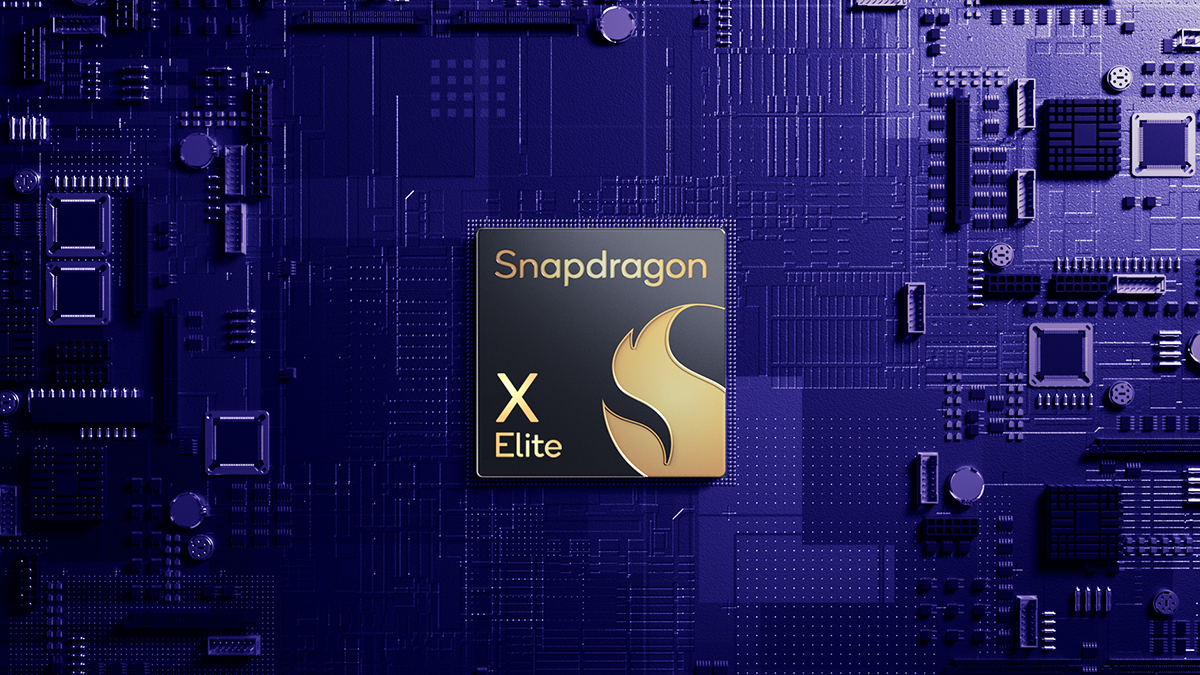
This new processor is the result of their acquisition of Nuvia, which ultimately led to the creation of Qualcomm’s own custom CPU core called the Qualcomm Oryon. Snapdragon X Elite, built on the 4nm process, features this Oryon CPU packing 12 high performance cores running at up to 3.8GHz with single and dual core boost speeds of up to 4.3GHz for workloads that require more single core performance.

According to Qualcomm, it’ll be able to offer the best in class performance, with 50% better peak multi-threaded performance than other ARM-based competitors, and faster single threaded CPU performance against even the Apple M2 Max. Against x86 processors meanwhile, Snapdragon X Elite claims to offer up to twice the CPU performance against rivalling 12-core and 10-core laptop chips such as the Intel Core i7-1355U and Core i7-1360P, while performing up to 60% faster against 14-core laptop chips like the Intel Core i7-13800H.
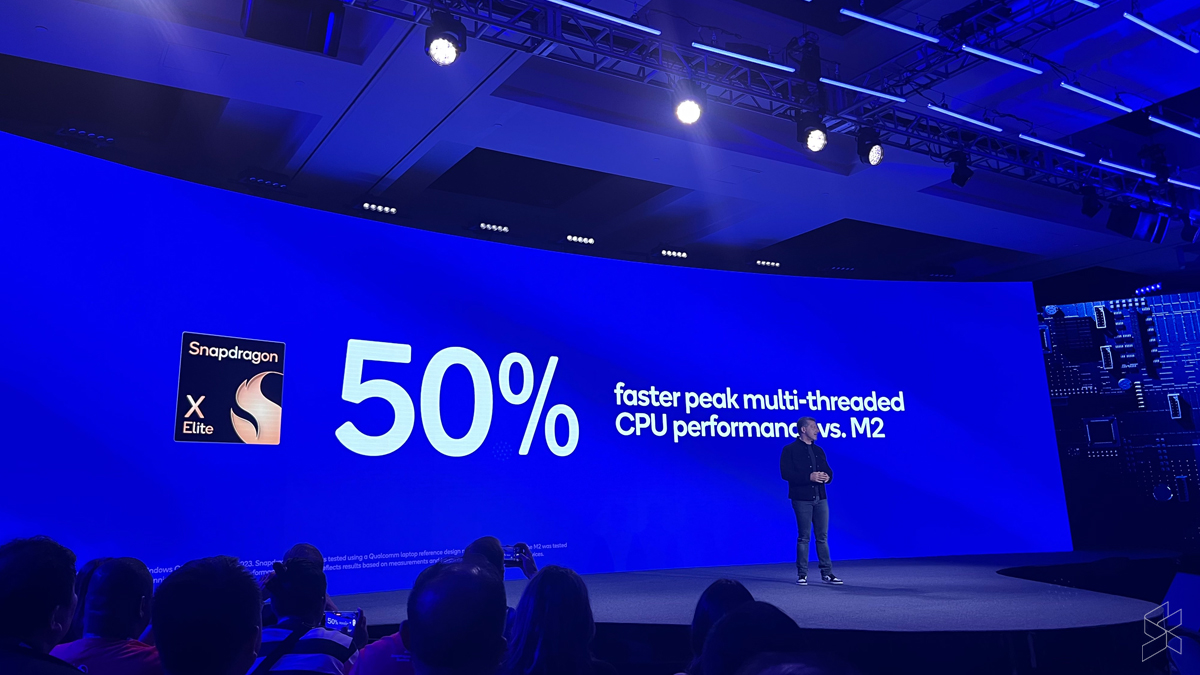


It’s also incredibly efficient, being able to match these x86 processors while using just one third of the power, allowing it to deliver up to multiple days of battery life. In particular, they claim the Oryon CPU can match the Intel Core i9-13980HX while using 70% less power, while also being able to outperform it in single-threaded CPU performance when power isn’t a concern. Similarly, against the M2 Max, Qualcomm says they can match its peak performance, while using 30% less power.
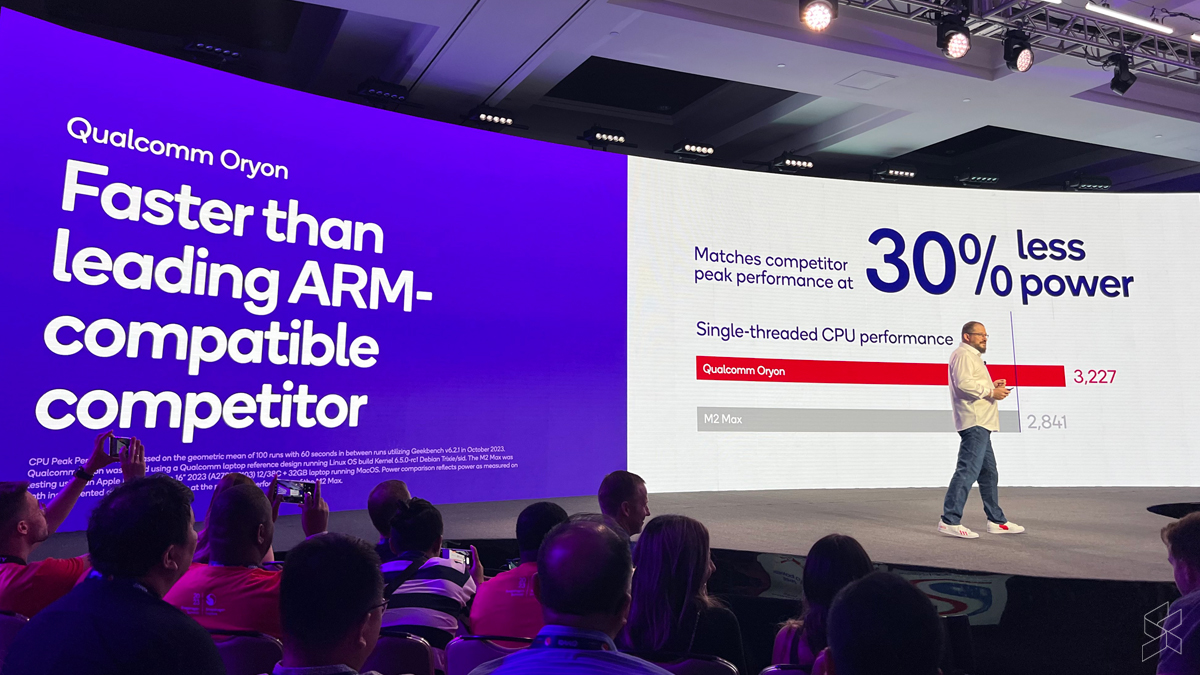
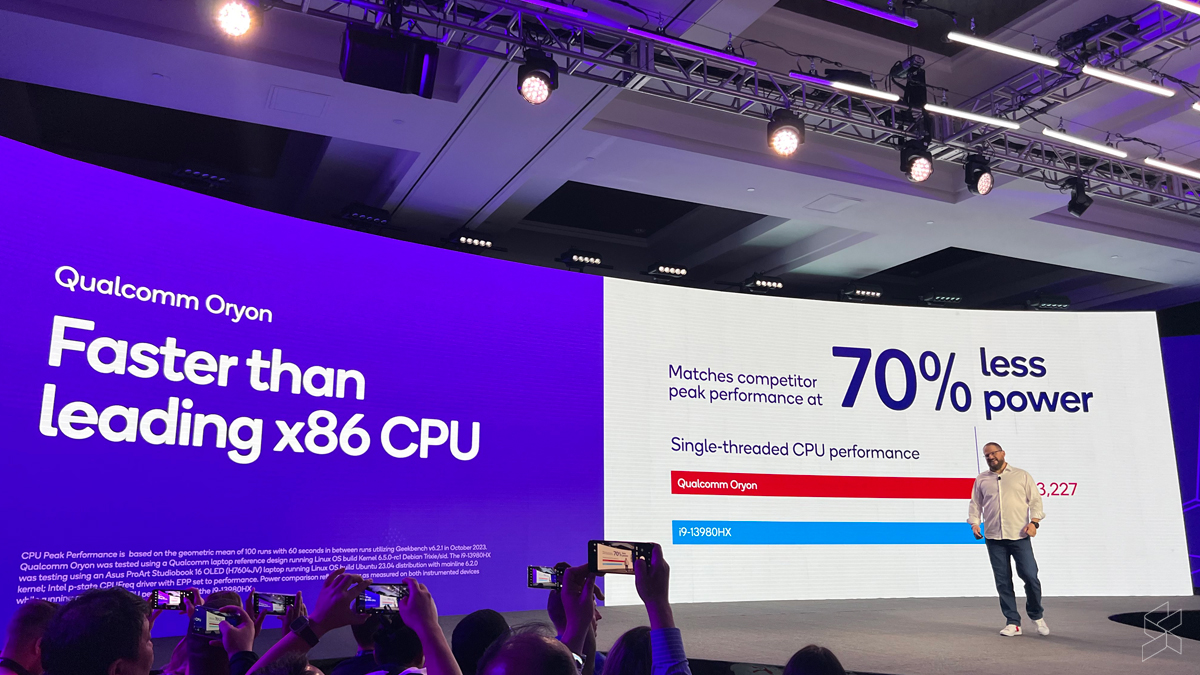
This CPU also takes advantage of LPDDR5X memory with speeds of up to 8533MT/s, 136GB/s bandwidth and up to 64GB of RAM in total. As for storage, the Snapdragon X Elite can run off NVMe SSDs using PCIe Gen 4 as well as UFS 4.0 storage.
As for its GPU, Snapdragon X Elite comes with an integrated Qualcomm Adreno GPU capable of 4.6 TFLOPS. It also supports built-in displays pushing up to a 4K resolution with a refresh rate of up to 120Hz as well as HDR10 support, while for external display support the Adreno GPU can do up to triple UHD or dual 5K external displays at the same time. An Adreno VPU meanwhile provides support for things like AV1 encode and decode of up to 4K HDR. Qualcomm claims up to twice the GPU performance of the integrated GPUs in its x86 rivals, while using significantly less power too.
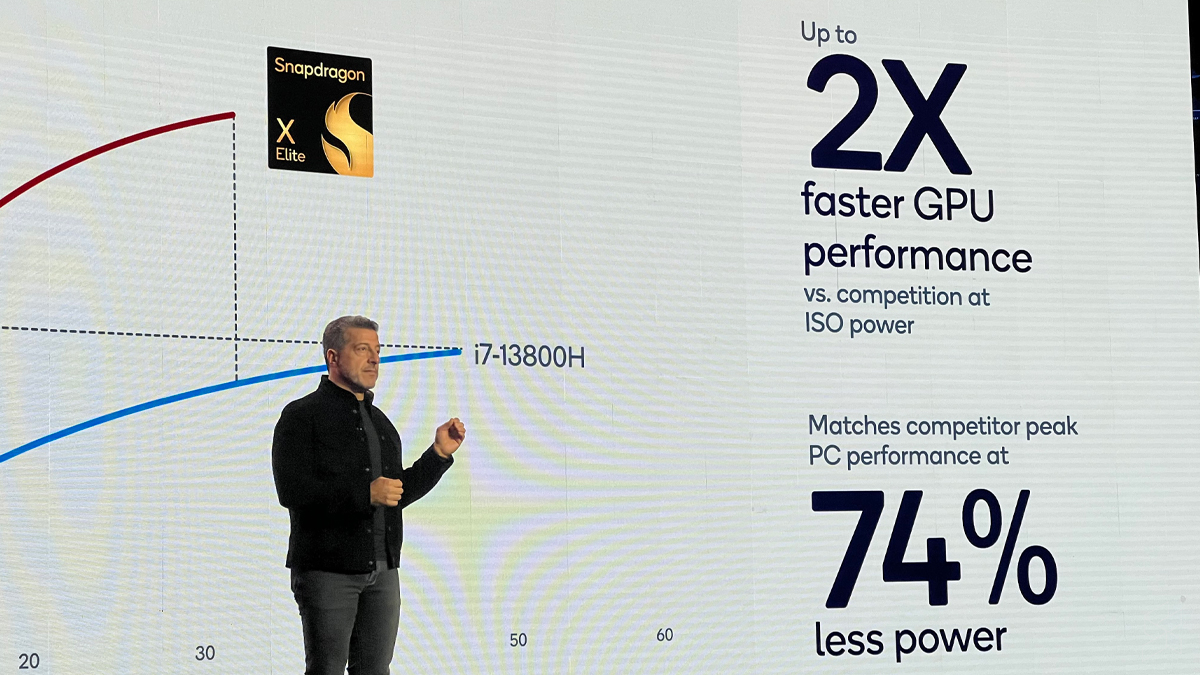
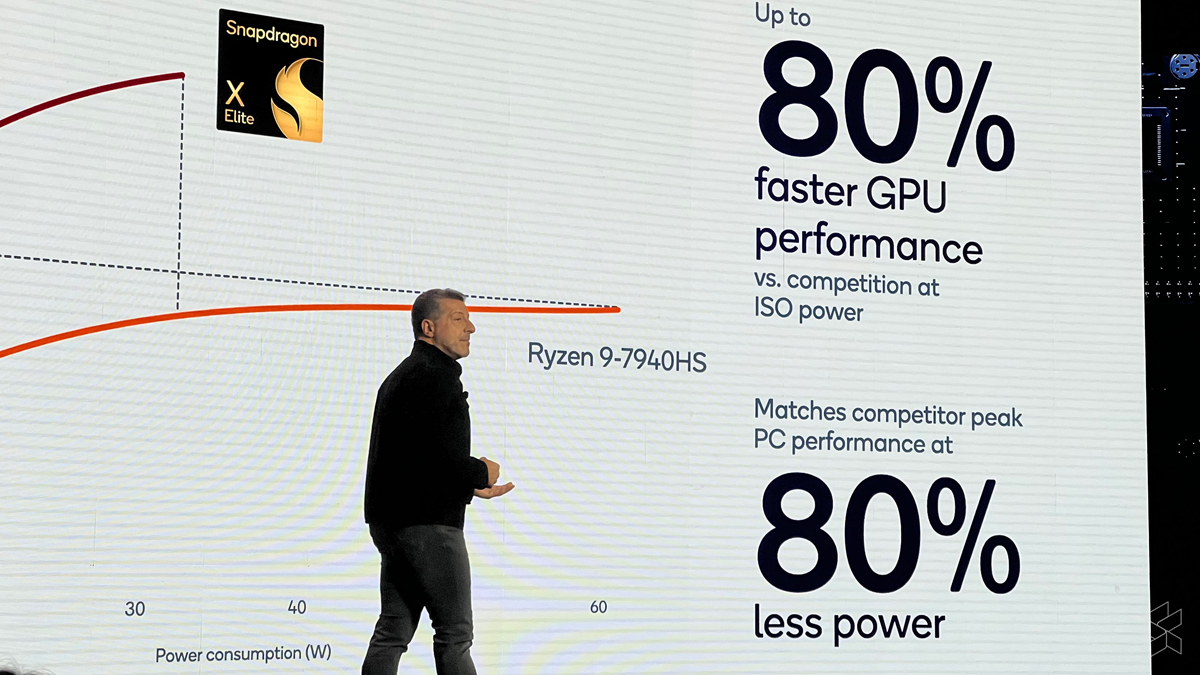
Snapdragon X Elite offers plenty of AI smarts too. It features an ‘industry-leading’ Qualcomm AI Engine, built on its Hexagon NPU capable of 45 TOPs of performance. This allows the Snapdragon X Elite to run generative AI large language models of up to 13 billion parameters on-device. There’s also the Qualcomm Sensing Hub with an updated micro NPU inside handling things like the login experience, security and privacy. The Qualcomm AI Engine supports Windows Studio Effects too along with other AI-accelerated applications.

Other features of note include lossless audio support even with wireless headphones thanks to Snapdragon Sound, as well as an integrated Always-Sensing ISP. Snapdragon Seamless meanwhile is a new feature that allows you to easily switch between your various Android, Windows and Snapdragon devices. As for connectivity, a Snapdragon X65 5G Modem-RF and a Qualcomm FastConnect 7800 system offers not just 5G connectivity but also WiFI-7 support and Bluetooth 5.4.
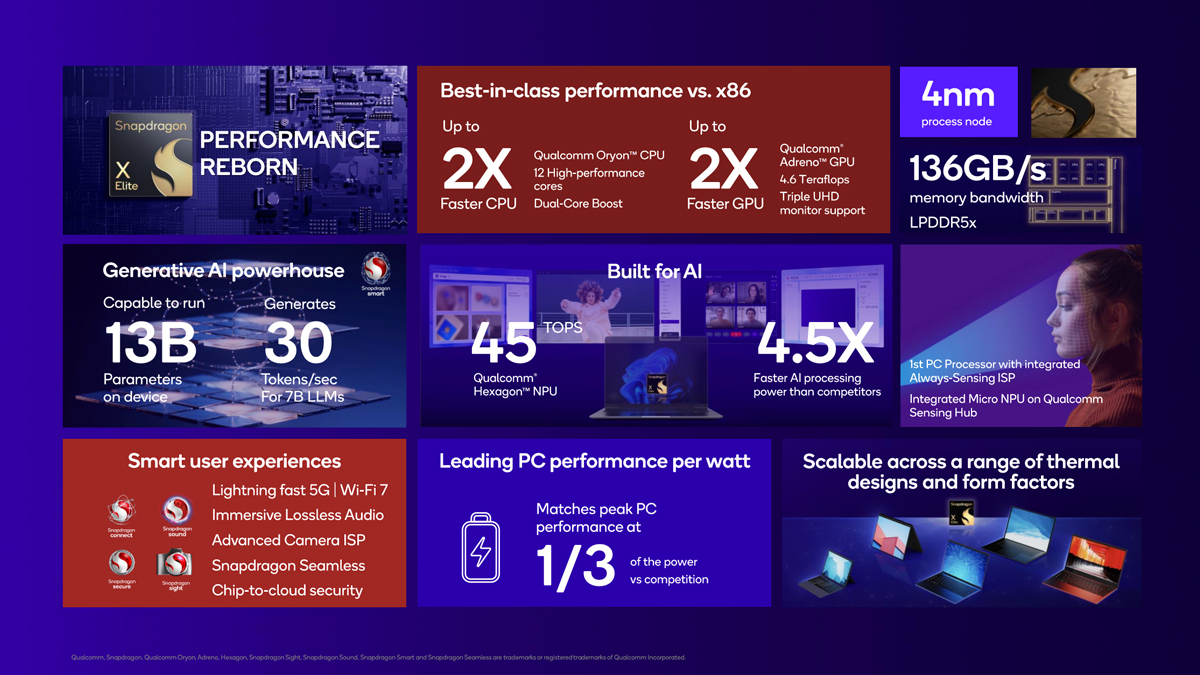
“Snapdragon X Elite represents a dramatic leap in innovation for computing as we deliver our new, custom Qualcomm Oryon CPU for super-charged performance that will delight consumers with incredible power efficiency and take their creativity and productivity to the next level,” – Kedar Kondap, Qualcomm Senior Vice President & General Manager of Compute & Gaming

Unfortunately for those of you looking to switch to a Snapdragon X Elite laptop soon, Qualcomm says that the first PCs to be powered by Snapdragon X Elite will only debut some time in mid-2024. They also teased that the Qualcomm Oryon core is going to come to the wider Snapdragon family, with Snapdragon mobile platforms set to adopt Oryon next year.








